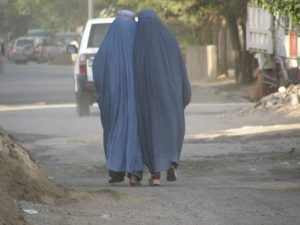The Big Picture
My research examines the intersection of environmental governance, human security, and environmental justice across diverse landscapes and national contexts. I employ theories of institutional change to explain 1) why certain norms, practices, and policies are accepted as international standards of “best practice” and 2) how these global models affect social and environmental outcomes as they are implemented across various domestic contexts. My goal is to understand whether globally-accepted models of environmental governance can actually enhance human security and environmental sustainability.
Co-Producing Community – An integrated approach to building smart and connected nutrient management communities in the US Corn Belt (Co-PI NSF SCC)

Farmers in the United States (US) Corn Belt produce ~30% of the world’s corn and soybean, which depends on the use of fertilizers containing both nitrogen (N) and phosphorus (P). However, due to a lack of consistent and reliable information, Midwest farmers tend to over-apply fertilizer. This practice directly affects farmers in terms of high cost and negatively impacts environmental sustainability. Yet, farmers’ perceptions of nutrient management challenges vary widely as does their willingness to adopt novel nutrient management approaches. Thus, an urgent need exists to provide farmers with and help them adopt effective and trusted nutrient management tools informed by advanced science and technology as well as farmer-based expertise. This research addresses these needs in rural farming communities in the US Corn Belt by developing cutting-edge scientific and technological solutions, designed with and for farmers, capable of addressing N-P management challenges according to different farmers’ needs. Specifically, we aim to develop a smart and connected “Nutrient Management Community” (NuMC) in the US Corn Belt. The defined NuMC includes (1) university researchers that advance relevant science and develop technologies to guide N-P fertilizer application, (2) community-based organizations, including the Illinois Farm Bureau (IFB) and the University of Illinois at Urbana-Champaign (UIUC) Extension, that manage and expand N-P management programs developed from research, and (3) farmers who voluntarily employ this approach to guide their N-P fertilizer application.
Collaborators:
Dr. Kaiyu Guan, Associate Professor. Dr. Guan is a computational environmental scientist studying underlying processes of vegetation-hydrology interactions (i.e. ecohydrology, water-ecosystem-food nexus) for natural and agricultural ecosystems.
Dr. Andrew Margenot, Assistant Professor. Dr. Margenot is a soil scientist who studies how we monitor and manage soils as natural capital.
Dr. Zhenong Jin, Assistant Professor. Dr. Jin integrates remote sensing, computational modeling, and machine learning to address agricultural and environmental sustainability under a changing climate.

In Colombia’s “post-conflict” period, there is an urgent need to disentangle causal relationships between land cover land use change (LCLUC), conflict, and peacebuilding. Since the 2016 Peace Agreement between the Government of Colombia and the Revolutionary Armed Forces of Colombia (FARC), Colombia has experienced significant deforestation and environmental degradation, especially in the Amazon. Environmental change, in turn, is perceived to be heightening the risk of conflict relapse. Existing scholarship argues that FARC’s demobilization, in conjunction with weak state presence, is driving LCLUC. However, much of this research has focused on measuring LCLUC after 2016 to gauge the effect of the peace process. This is problematic because it fails to consider historical patterns of LCLUC and thus risks drawing inaccurate conclusions about long-term LCLUC drivers, as well as the factors shaping opportunities for building durable peace. There is thus a critical and unmet need to integrate remote sensing with social science research to elucidate LCLUC-conflict-peacebuilding causal relationships. We address this need by drawing on a socio-ecological concept model that employs LCLUC as a lens to examine conflict and peacebuilding dynamics, focusing specifically on 1) how the sociopolitical and economic drivers of conflict produce LCLUC and 2) how LCLUC in turn shapes conflict-peace transitions. Our approach combines NASA satellite remote sensing data, advanced image processing, and geospatial analysis with multiscalar socio-political and economic analyses across two regions in Colombia (Montes de Maria and Caquetá) from 2000 to the present. Our analysis centers on three time periods: (1) Plan Colombia (2000-onward); (2) the demobilization of paramilitary groups (2005-onward); and (3) the Demobilization of FARC/peace process (2016-onward). We thus attempt to account for both the spatial and temporal complexity of the Colombian conflict to show how LCLUC-conflict dynamics have shaped possible peacebuilding trajectories across Colombia.
Collaborators:
Dr. Bin Peng, Research Assistant Professor
Dr. Luz Rodriguez, Assistant Professor
The Politics of a Just Energy Transition in Illinois and the Midwest (USDA Hatch Grant)

This project seeks to understand how Illinois and other Midwestern states are approaching a “just energy transition.” The overall project is composed of multiple sub projects.
2.1 Contesting Carbon Democracy: The Politics of DAPL.
This project examines the regulatory permitting and construction of the Bakken Pipeline in Illinois, Iowa, and Louisiana (Dakota Access Pipeline, Energy Transfer Crude Oil Pipeline, and Bayou Bridge Pipeline).
The Dakota Access Pipeline made global headlines in 2016 when a group affiliated with the Standing Rock Sioux in North Dakota began a protest to oppose the siting of the pipeline near the Standing Rock Indian Reservation. Since then, Standing Rock has featured widely in debates about oil and gas pipelines specifically and US energy policy broadly. The experiences of landowners in areas impacted by the pipeline outside North Dakota, specifically Illinois, Iowa, and Louisiana have been largely left out of this conversation. Given that agriculture is central to any discussion on US energy policy, this research aims to ensure that these perspectives are accounted for in ongoing policy debates.
3.2 Mapping the Energy Transition in Illinois (Shannon Anderson)
3.3 Examining the politics of de-industrialization in the Rust Belt (Jane Gross)
Past Research Projects

Mineral Extraction in Ghana and Sierra Leone
Areas of Study: mineral extraction, land use change, Environmental Impact Assessments, participatory governance, deforestation
Photo: Informal Artisanal Mining, Ghana

Environmental Peacebuilding in Afghanistan
Areas of Study: environmental security and peacebuilding, institutional change, natural resource governance, and biodiversity conservation in conflict settings
Photo: Kabul, Afghanistan

Human-Wildlife Conflict in India
Areas of Study: biodiversity conservation and development, human-wildlife conflict, environmental justice and inequality
Photo: Household Surveys in Rajasthan, India